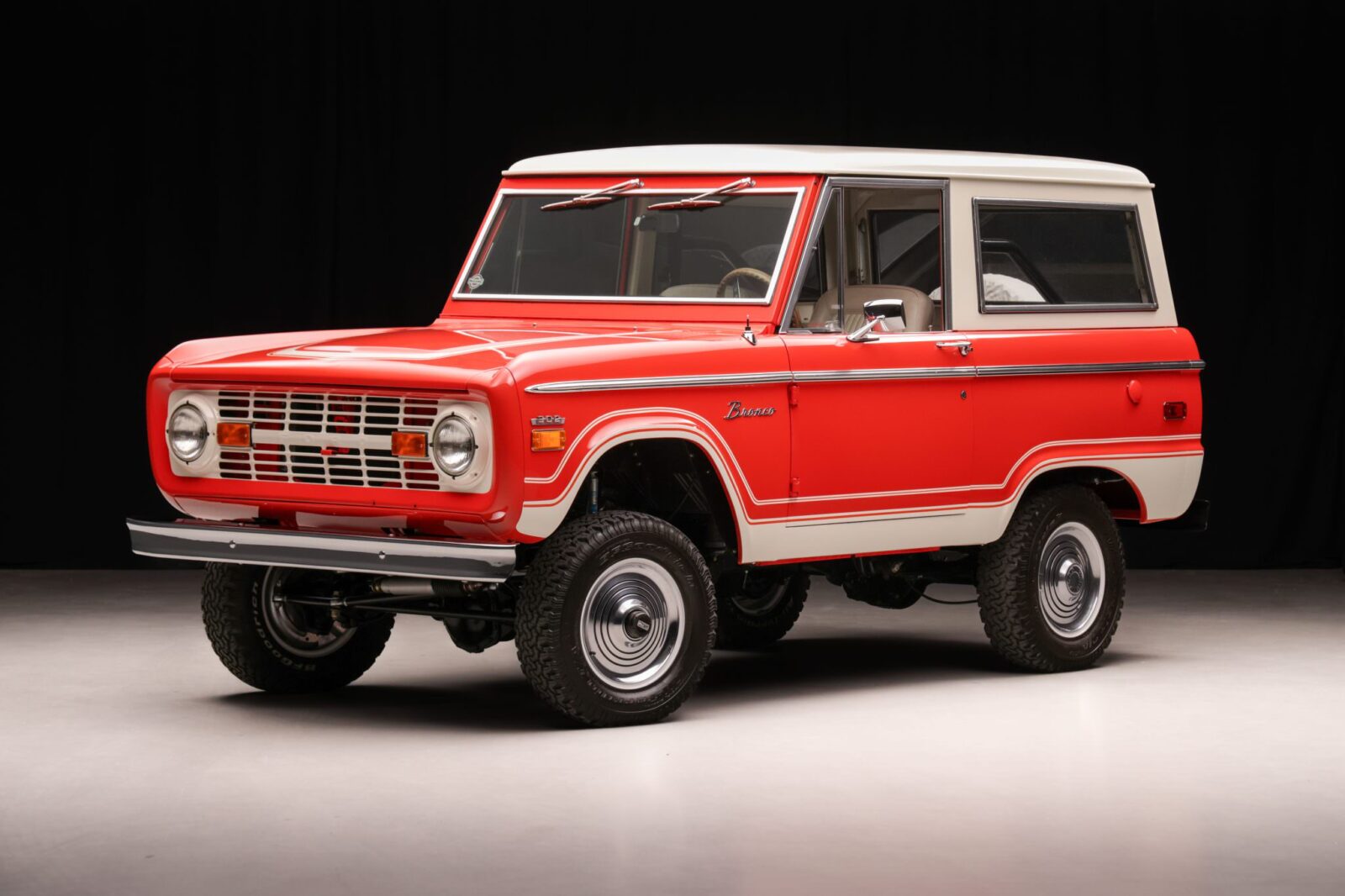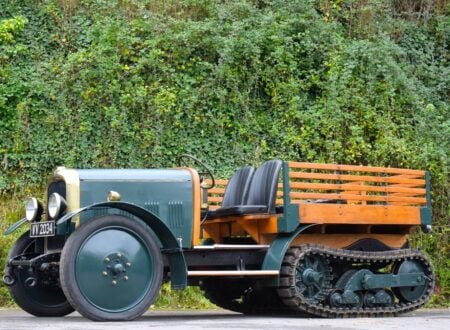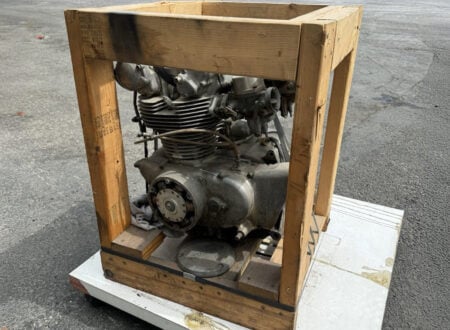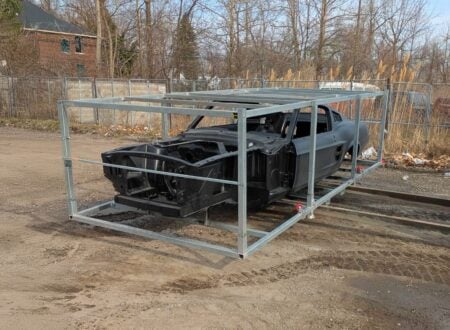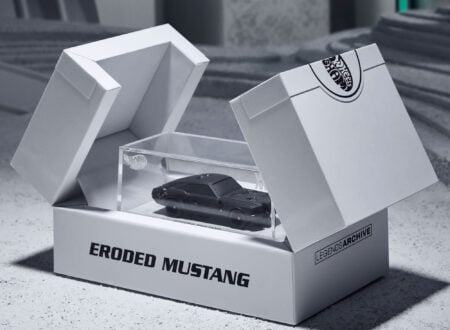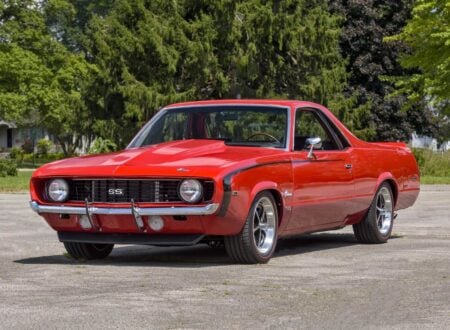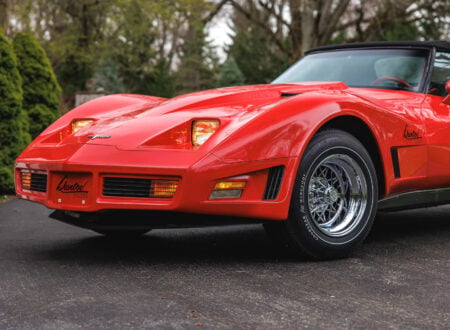This is a Ford Bronco from 1971 that has been completely rebuilt, but kept looking as close to stock as feasible. It’s now powered by a Coyote V8 crate engine with 480 bhp – vastly more than any first-gen Bronco had from the factory.
Aside from the Coyote V8 under the hood, this Bronco now has a 10-speed 10R80 automatic transmission, a Dana 20 transfer case with twin-stick shifters, Bilstein shock absorbers, power steering, a roll bar, and plenty more.
Fast Facts: A Coyote-Powered Bronco Sleeper
- This 1971 Ford Bronco has been comprehensively rebuilt with a focus on maintaining a stock appearance. Major mechanical upgrades include a 5.0 liter Coyote V8 crate engine producing 480 bhp and a modern 10R80 10-speed automatic transmission, making it vastly more powerful and refined than any first-generation when Bronco sold new.
- Supporting upgrades include a Dana 20 transfer case with twin-stick shifters, Bilstein shocks, power steering, and a roll bar. The vehicle sits on period-style 15″ steel wheels with BFGoodrich All-Terrain T/A tires and retains a factory-style interior finished in Parchment vinyl with modern conveniences like air conditioning and an updated audio system.
- The first-generation Bronco, launched in 1965 for the 1966 model year, was designed as a compact 4×4 to rival the Jeep CJ-5 and International Scout. It rode on a dedicated chassis with coil-sprung front suspension and was initially powered by a 170 ci inline-six. V8 options and creature comforts like power steering were added later in its production run.
- The model shown is finished in Calypso Coral with a removable hardtop and chrome accents. Now configured as a high-performance sleeper, it offers classic looks with thoroughly modern underpinnings. It’s being sold out of New York with a clean Montana title and no reserve on Bring a Trailer.
History Speedrun: The First-Gen Ford Bronco
The first-gen Ford Bronco debuted in August of 1965 as a 1966 model year vehicle, it was designed from the ground up by Ford to compete directly with the Jeep CJ-5 and the International Harvester Scout, two vehicles that had essentially founded the burgeoning personal SUV market niche.
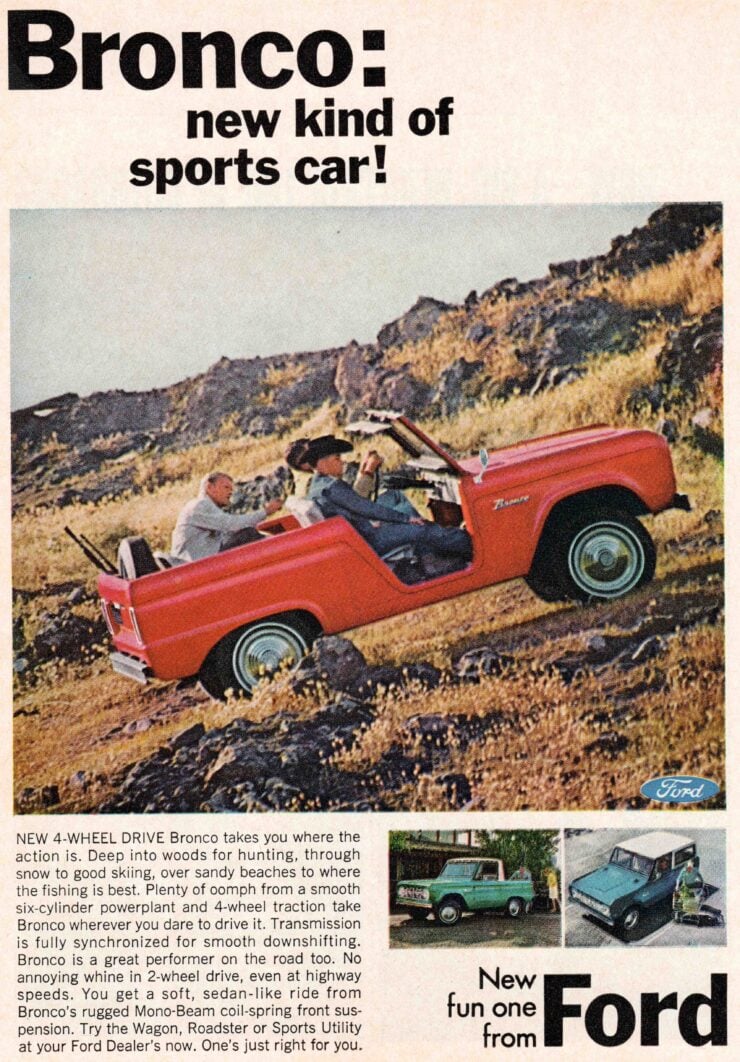

Conceived under the direction of Ford product manager Donald Frey and developed by a small engineering team led by Paul G. Axelrad, the Bronco was envisioned as a compact 4×4 capable of handling both off-road trails and daily driving, with more on-road civility than its competitors.
The project was approved in February 1964 and fast-tracked for production with a unique chassis and body not shared with any other Ford vehicle.
The Bronco featured a fully-boxed ladder frame and a suspension setup that was relatively advanced for the segment at the time. The front end used a coil-sprung Dana 30 live axle located by radius arms and a track bar, while the rear used leaf springs and a Ford 9-inch axle. This design provided improved ride quality and front-end articulation compared to its leaf-sprung competitors.
Three body styles were offered initially: a two-door wagon, a half-cab pickup, and an open roadster, though the latter was dropped after 1968 due to low demand, which resulted in poor sales.
The original engine was a 170 cubic inch inline-six borrowed from the Ford Falcon, producing 105 bhp. This was paired with a three-speed column-shifted manual transmission and a Dana 20 transfer case. A 289 cubic inch V8 became optional later in 1966, upgraded to a 302 V8 in 1969.
The inline-six grew to 200 cubic inches by 1973, and eventually to 250 cubic inches by 1974 in select trims. Power steering and automatic transmission options became available in 1973, addressing previous criticisms of drivability – particularly for those who daily drove their vehicles in more urban environments.
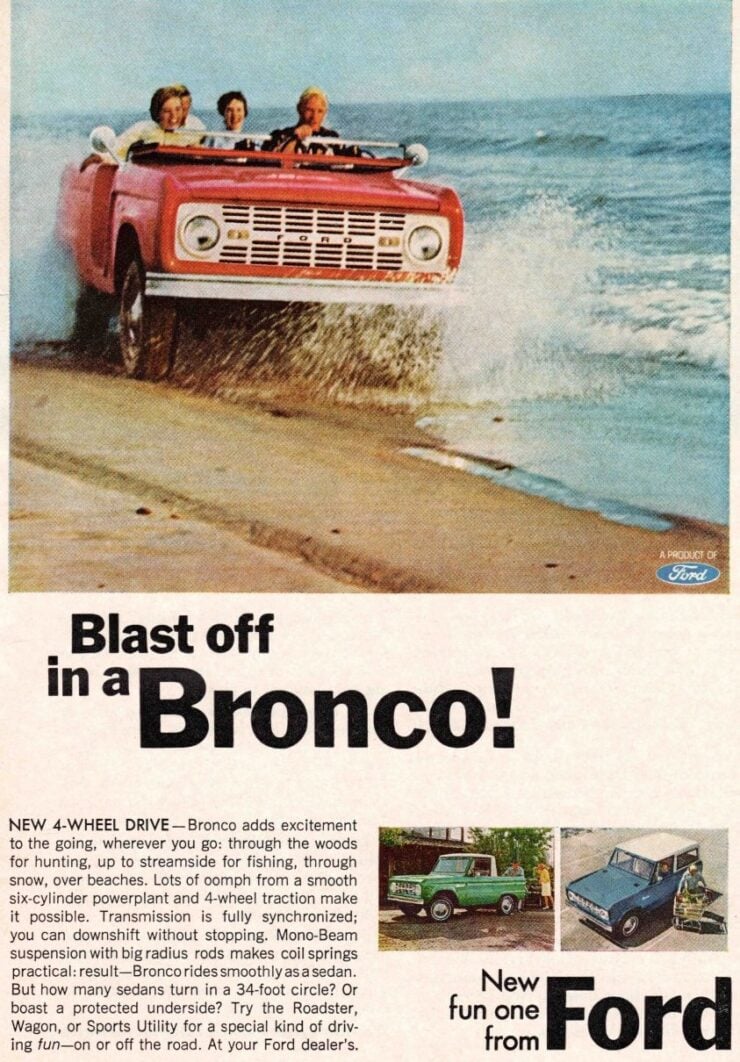

Styling remained largely unchanged throughout its production, though functional updates included the switch from vacuum to electric wipers in 1973, the introduction of a Dana 44 front axle in 1971, and an emissions-compliant evaporative fuel system. The U13 roadster was the rarest model, with only around 5,000 built. The half-cab pickup (U14) ended production in 1972, but it remains highly collectible today.
The first-gen Bronco ended its run in 1977. Its production lifespan reflected its unique position in the market – it was tougher than a standard station wagon, more refined than a Jeep, and smaller and simpler than the full-size SUVs that had started to appear with the likes of the Jeep Wagoneer and Chevrolet K5 Blazer.
The Bronco’s blend of compact size, reliable mechanical underpinnings, and its minimalist style would go on to influence generations of 4×4 design – including the all-new Ford Bronco that was released in 2021 with its design clearly based on its original forebear.
The Coyote V8-Powered Ford Bronco Sleeper Shown Here
The 1971 Ford Bronco you see here has been refinished in Calypso Coral with white side accents. It has a removable hardtop, chrome bumpers, a roll bar, dual side mirrors, and a rear-mounted spare under a cover.
It rides on period-correct 15″ steel wheels with polished chrome hubcaps, and 215/75 BFGoodrich All-Terrain T/A tires. It’s also fitted with Bilstein shock absorbers on all four corners, power steering, and front disc and rear drum brakes.
Inside you’ll find matching Parchment vinyl upholstered low-back front bucket seats and a rear bench seat, aftermarket air conditioning, a retro-style radio, MBQuart speakers, and a classic woodgrain steering wheel.
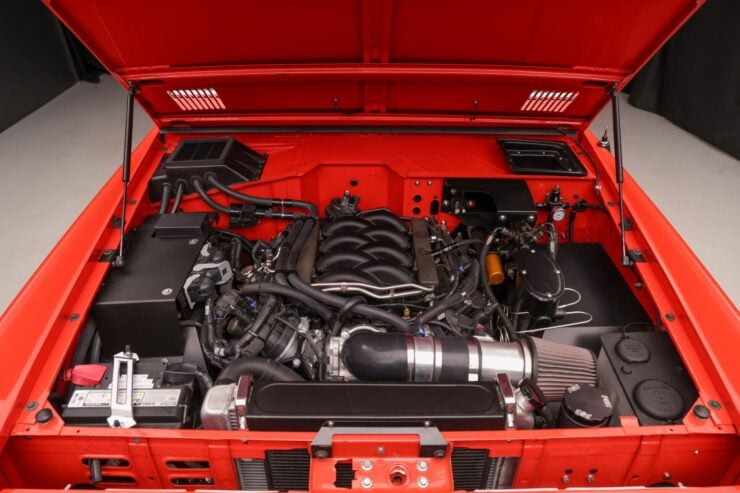

Under the hood sits a 480 bhp 5.0 liter Coyote V8 with a 2-into-1 exhaust system. Power is sent back through a 10-speed 10R80 automatic transmission and a Dana 20 dual-range transfer case to either all four wheels, or the rear wheels only.
It’s now being offered for sale out of North Salem, New York with partial service records, a clean Montana title, and no reserve on Bring a Trailer. You can visit the listing here if you’d like to read more or register to bid.
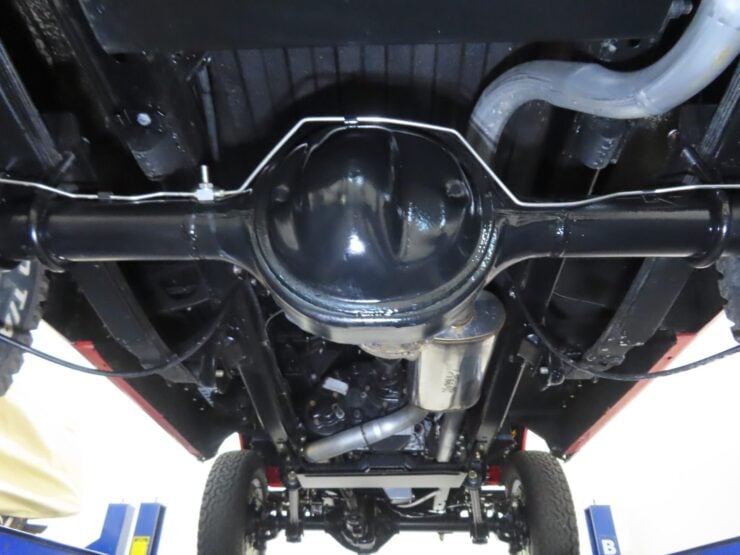
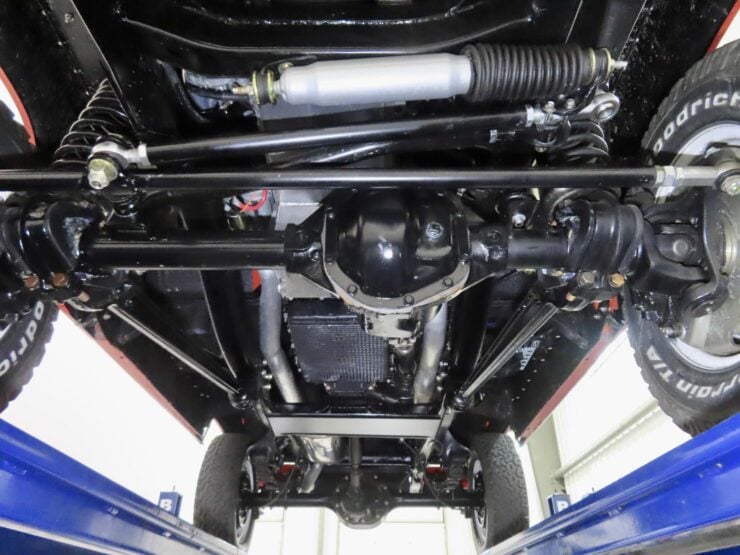
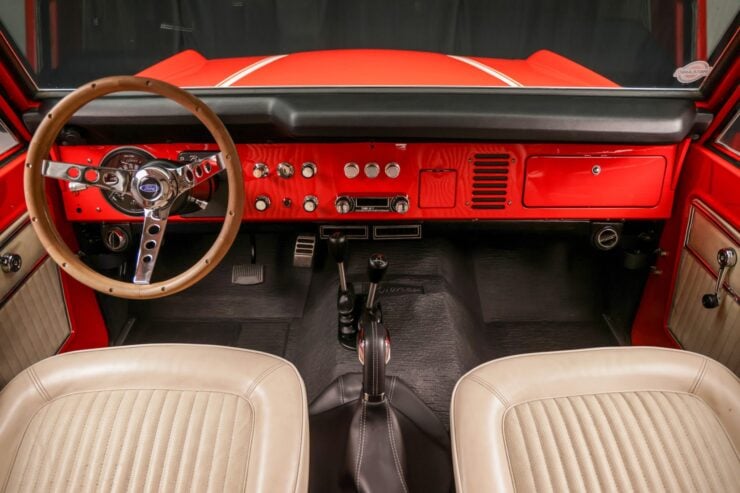
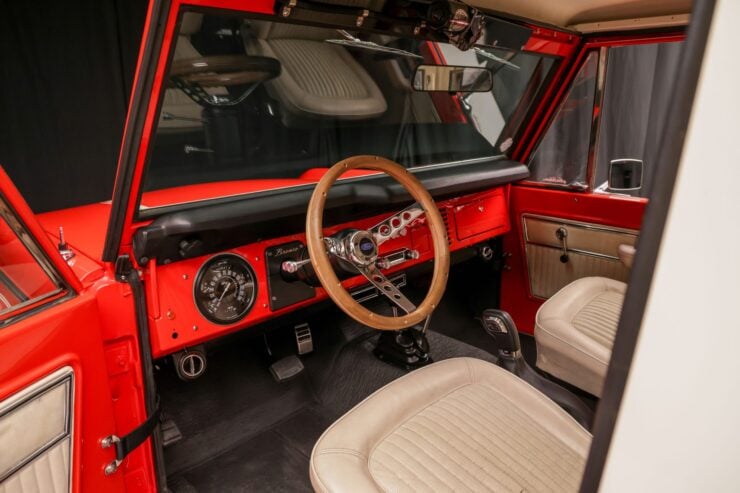
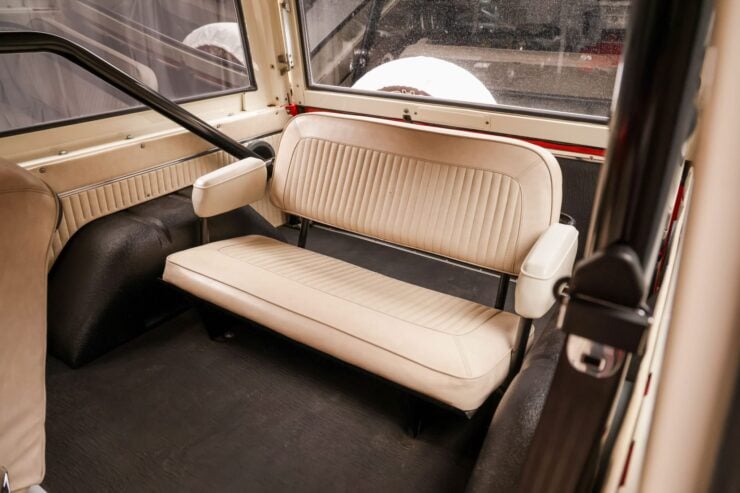
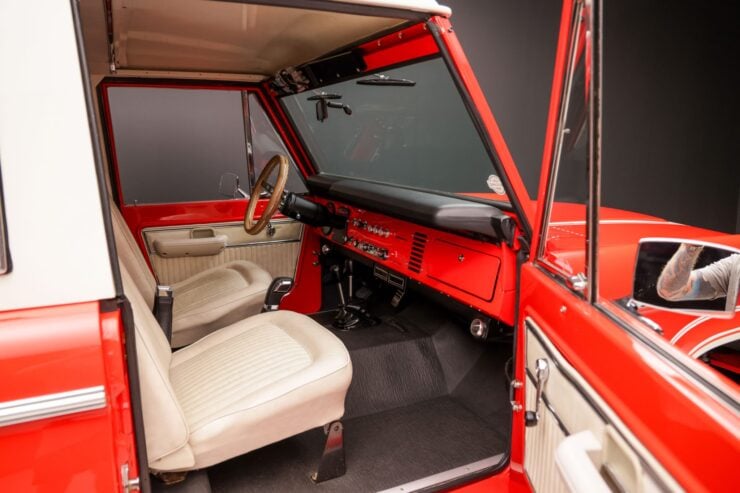
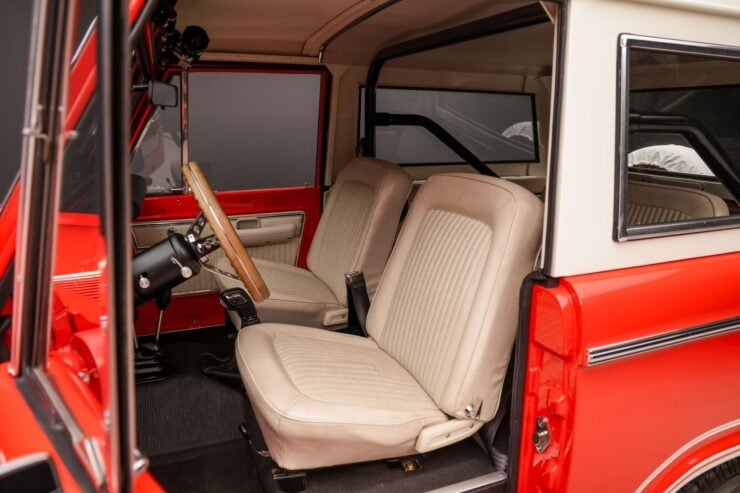
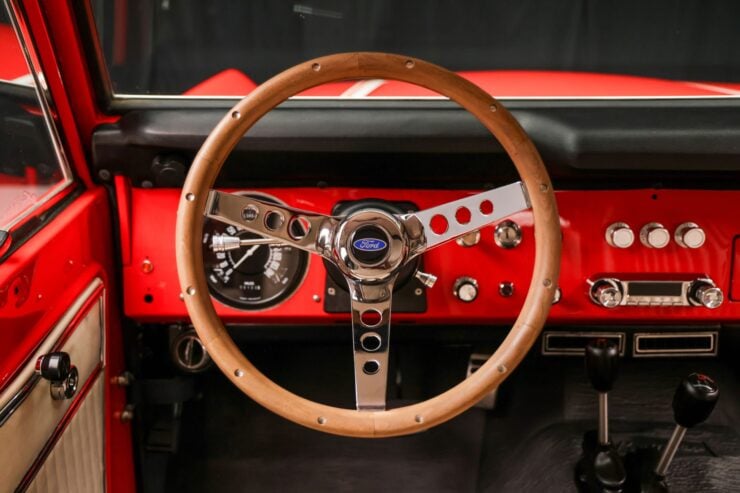
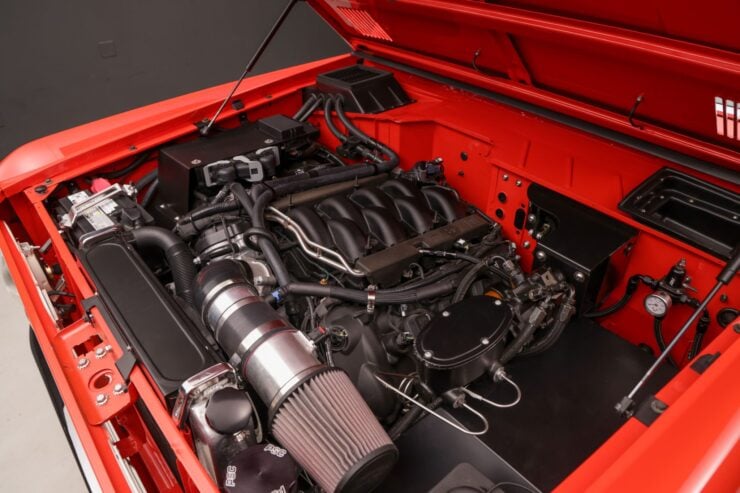
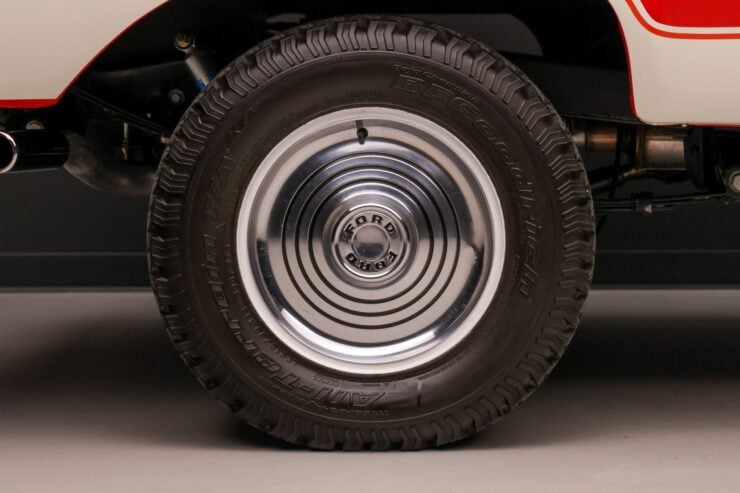
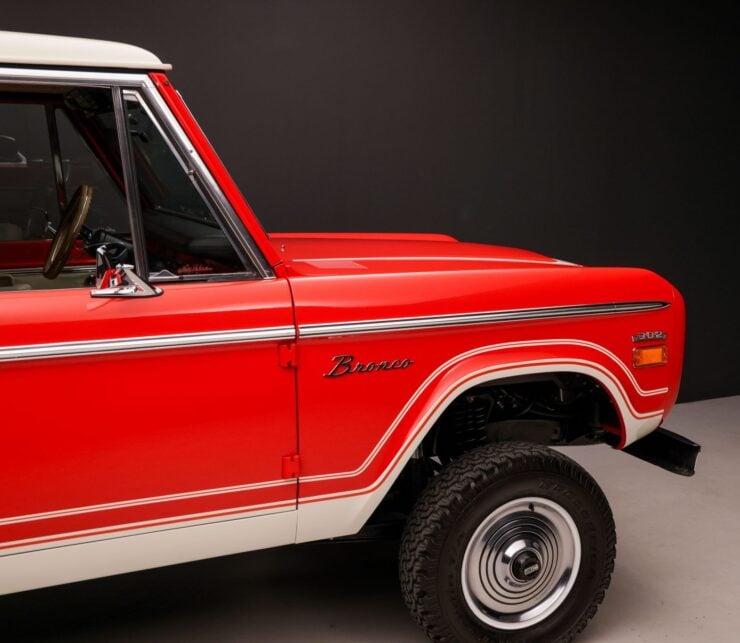
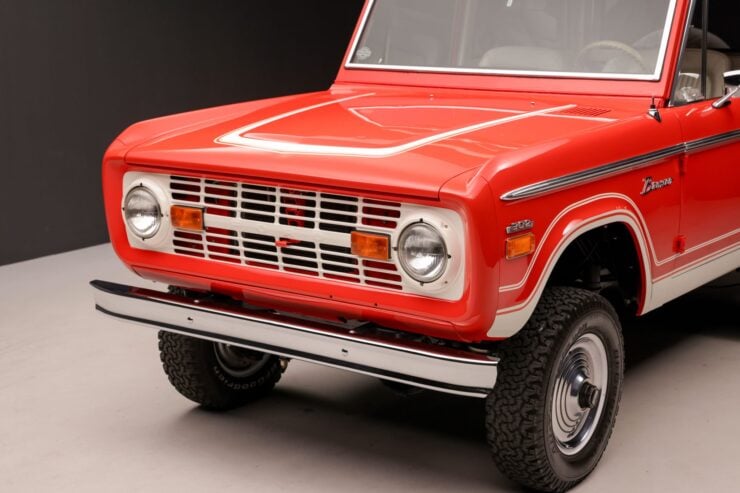
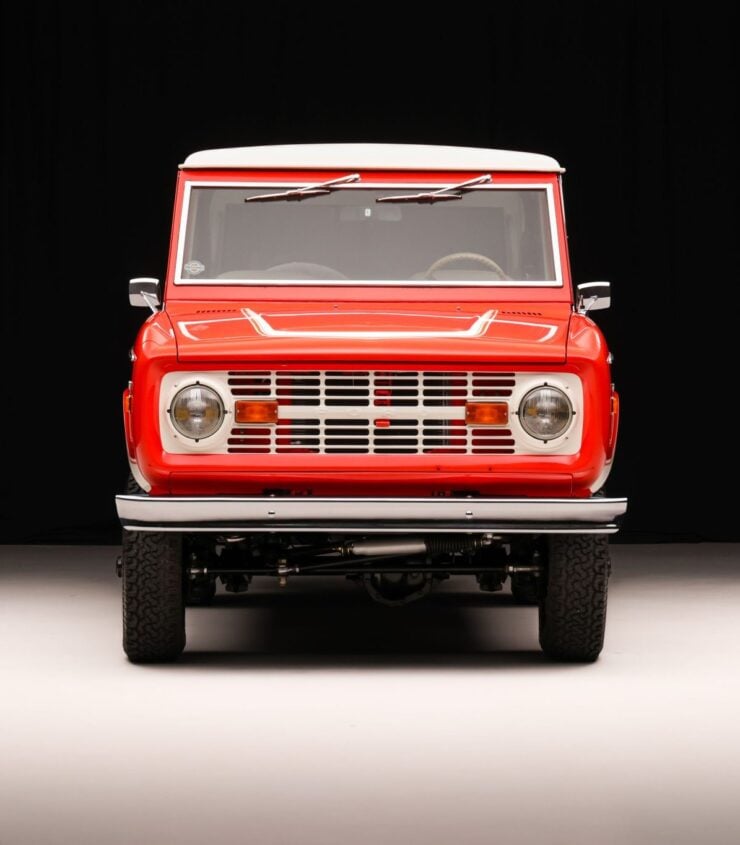
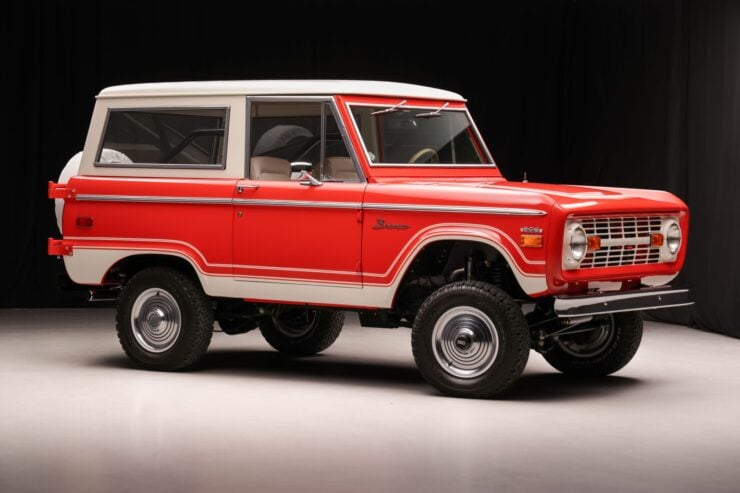
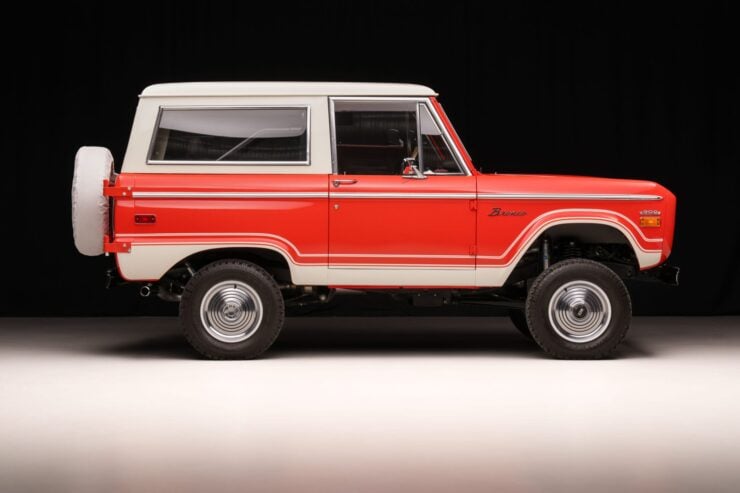
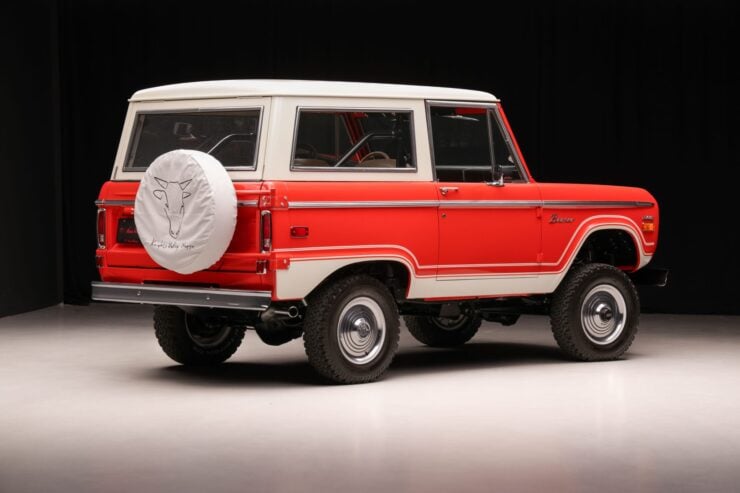
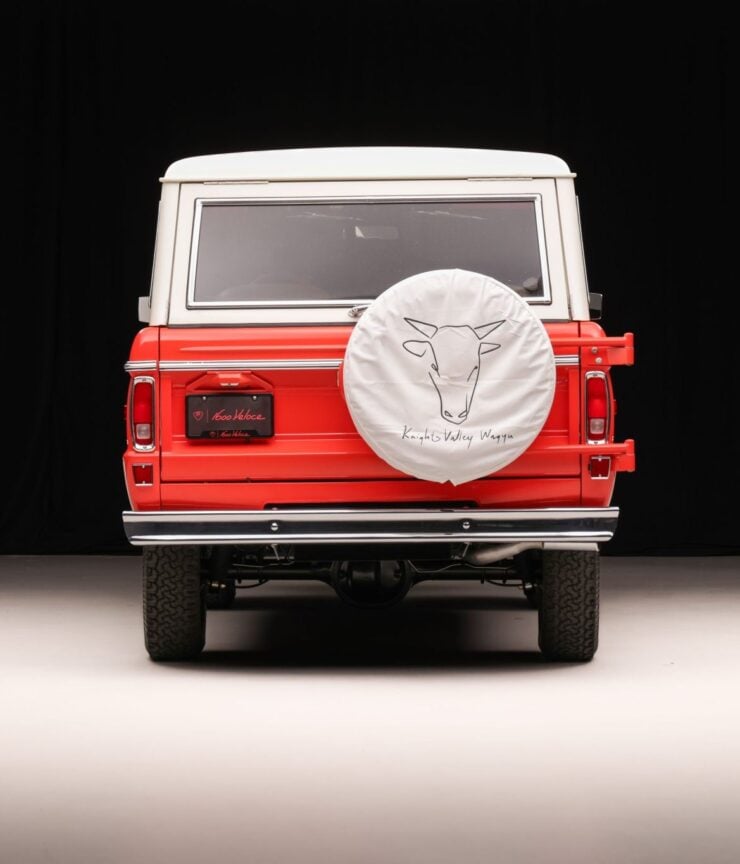
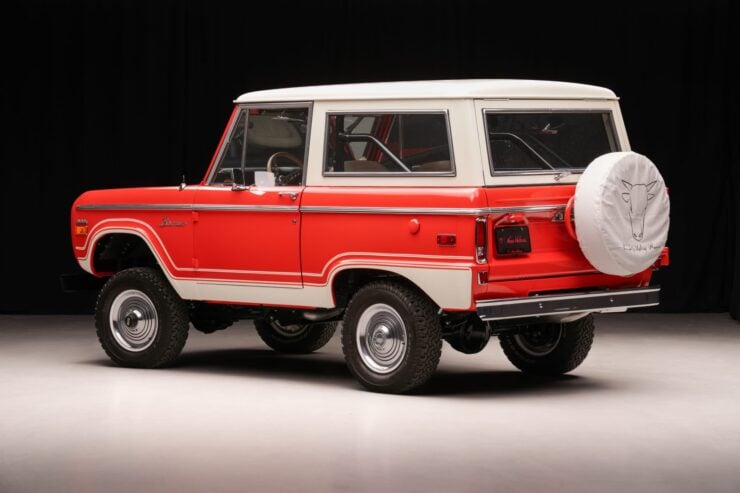
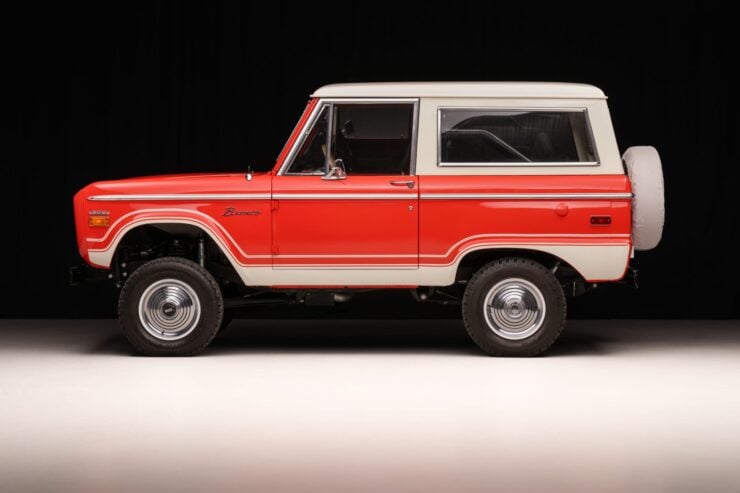
Images courtesy of Bring a Trailer

